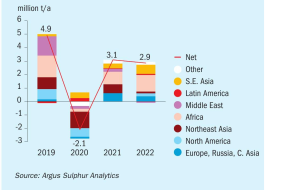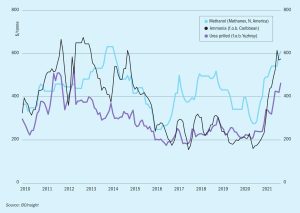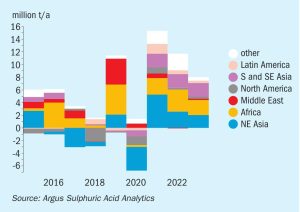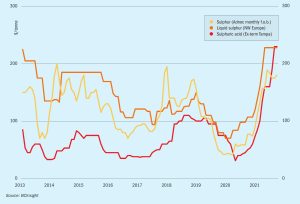
A co-product again
It’s a slightly dispiriting fact about the sulphur industry that most of its producers don’t really want it. If you’re a refiner or a sour gas producer, you mainly care about the diesel and gasoline or natural gas that you can process and sell, and the sulphur is just the inconvenient component that the law and your customers force you to remove. But at times when sulphur prices, as they have at the start of this January, reach levels as high as $300/t, then the industry standing joke is that sulphur suddenly stops being a by-product or waste product, and starts to become a ‘co-product’ instead.









